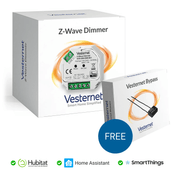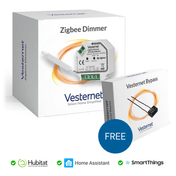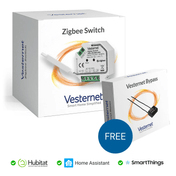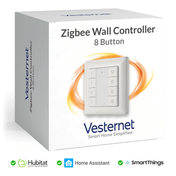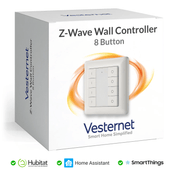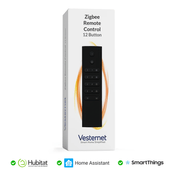The journey towards creating a connected home can feel overwhelming for many homeowners, especially with the rapid expansion of smart home solutions flooding the market. Recent studies show that whilst home automation adoption continues to grow, nearly 40% of homeowners delay their smart home installation due to confusion about where to begin and concerns about complexity. The abundance of device options, competing protocols, and technical jargon often creates analysis paralysis rather than progress.
Smart home installation doesn't have to be a daunting technical challenge. When approached systematically, any homeowner can successfully implement a connected home environment that delivers increased convenience, significant energy savings, and enhanced security. The key lies in understanding that home automation is best achieved through careful planning, strategic component selection, and gradual implementation rather than attempting to automate everything at once.
This comprehensive guide will take you through every essential aspect of smart home installation, from understanding fundamental concepts and planning your approach through selecting the right components and implementing basic automation. You'll learn how to assess your home's needs, choose appropriate wireless technologies, and create a phased roadmap that grows with your experience and budget, ensuring a successful and sustainable smart home journey.
Understanding Smart Home Fundamentals
Smart home technology operates on the principle of connected devices communicating through wireless protocols to create an integrated ecosystem. The most reliable and widely adopted protocols for professional smart home installations are Z-Wave and Zigbee, both of which create mesh networks that strengthen as you add more devices. These protocols offer superior reliability compared to Wi-Fi-based solutions, as they operate on dedicated frequencies designed specifically for home automation.
Key wireless protocol advantages:
- Z-Wave and Zigbee create self-healing mesh networks for reliable communication
- Dedicated frequencies reduce interference from Wi-Fi and other household devices
- Lower power consumption extends battery life for wireless sensors and controllers
- Enhanced security through encrypted communication between devices
Understanding how these devices interact within your smart home ecosystem is crucial for successful implementation. Each device serves as both a receiver and transmitter, creating multiple pathways for commands to reach their destination. This mesh network approach means that even if one device fails, your system continues to function through alternative routes, providing the reliability essential for daily home automation tasks.

Planning Your Smart Home Installation
Effective smart home planning begins with a thorough assessment of your current lifestyle patterns and future automation goals. Rather than focusing on individual devices, successful installations start by identifying the daily routines and challenges that smart home solutions can address. Consider which rooms you spend the most time in, what manual tasks you'd like to automate, and how technology can enhance your home's comfort and efficiency.
Essential planning considerations:
- Evaluate current pain points like inefficient lighting control or temperature management
- Prioritise rooms based on usage frequency and automation potential
- Set realistic budgets that allow for gradual expansion over time
- Consider existing electrical infrastructure and potential upgrade requirements
Creating a phased implementation roadmap ensures your smart home installation remains manageable and cost-effective. Start with foundational components like a reliable gateway hub and basic lighting control, then expand into climate management, security features, and advanced automation as your confidence and budget allow. This approach prevents overwhelming complexity whilst building practical experience with each new component.

Essential Component Selection Guide
The foundation of any successful smart home installation rests on selecting compatible, high-quality components that work seamlessly together. Your component selection should begin with a reliable gateway hub that supports your chosen wireless protocol, followed by smart switches and plugs for immediate automation benefits. Climate control through smart thermostats and various controller options for intuitive operation complete the essential component lineup.
Core smart home components:
- Gateway hub for central device management and protocol integration
- Smart switches and plug modules for lighting and appliance control
- Intelligent thermostats for automated climate management
- Wall controllers and handheld remotes for convenient operation
Quality component selection significantly impacts long-term system reliability and user satisfaction. Professional-grade devices from established manufacturers typically offer better build quality, longer warranties, and more comprehensive support compared to budget alternatives. Investing in reliable components from the start prevents future frustration and costly replacements whilst ensuring your smart home solutions deliver consistent performance.

Gateway and Hub Selection: Your Smart Home's Central Command
The gateway hub serves as your smart home's central nervous system, coordinating communication between devices, processing automation rules, and providing remote access capabilities. Selecting the right hub is perhaps the most critical decision in your smart home installation, as it determines system compatibility, reliability, and expansion possibilities. Professional gateway solutions offer robust processing power, multiple protocol support, and enterprise-level reliability.
Essential gateway hub features:
- Multiple wireless protocol support for maximum device compatibility
- Local processing capabilities to reduce dependence on internet connectivity
- Comprehensive automation engine for complex scene programming
- Regular firmware updates and professional technical support
Your gateway hub choice also impacts future scalability and integration possibilities. Look for solutions that support both Z-Wave and Zigbee protocols, offer extensive third-party integrations, and provide professional installation support if needed. The best gateway hubs balance powerful functionality with user-friendly interfaces, ensuring your smart home installation remains accessible whilst offering advanced capabilities as your expertise grows.
Starting with Smart Switches and Plugs
Smart switches and plug modules represent the most practical entry point for smart home installation, providing immediate automation benefits with minimal complexity. These devices replace existing wall switches or plug into standard outlets, instantly adding remote control and automation capabilities to your lighting and appliances. Most quality smart switches also include energy monitoring features, helping you understand and optimise your home's power consumption.
Smart switch installation benefits:
- Immediate lighting control from anywhere in your home or remotely
- Energy monitoring capabilities to track consumption patterns
- Integration with existing electrical systems without major modifications
- Foundation for advanced automation scenes and scheduling
When implementing your first smart switches and plugs, focus on frequently used lights and appliances where automation provides clear convenience benefits. Kitchen lighting, living room lamps, and bedroom switches are excellent starting points as they offer daily interaction opportunities to build confidence with your new smart home solutions. Professional installation may be recommended for hardwired switches, whilst plug modules can typically be implemented by any homeowner.
Basic Automation Implementation
Creating your first automated scenes transforms individual smart devices into a cohesive smart home experience. Start with simple automation rules like turning lights on at sunset or adjusting heating when you leave home. These basic implementations provide immediate convenience whilst teaching you how different devices interact within your automation ecosystem. Successful automation focuses on enhancing existing routines rather than completely changing your lifestyle.
Beginner automation projects:
- Morning scenes that gradually increase lighting and adjust temperature
- Evening routines that secure doors and dim lights for relaxation
- Away modes that simulate occupancy whilst saving energy
- Simple scheduling for exterior lighting and climate control
As your confidence grows, expand into more sophisticated automation that responds to sensors, weather conditions, or occupancy patterns. The key to successful basic automation implementation lies in starting simple and gradually adding complexity based on real-world usage patterns. This approach ensures your smart home solutions truly enhance daily life rather than creating unnecessary complications.

Control Methods and User Interfaces
Effective smart home control requires multiple interaction methods to suit different situations and user preferences. Wall controllers provide intuitive local control, handheld remotes offer portable convenience, and mobile apps enable comprehensive management and remote access. The best smart home installations combine these control methods to create a seamless user experience that feels natural and responsive.
Control method advantages:
- Wall controllers integrate seamlessly with existing switch locations
- Handheld remotes provide portable control without phone dependency
- Mobile apps offer advanced programming and remote access capabilities
- Voice control adds hands-free convenience for common commands
Consider how different household members will interact with your smart home system when selecting control interfaces. Wall controllers work particularly well for visitors and family members who aren't familiar with mobile apps, whilst handheld remotes provide excellent bedside control for lighting and climate adjustment. The most successful installations offer redundant control methods, ensuring your smart home solutions remain accessible even when primary interfaces aren't available.
Troubleshooting and Best Practices
Maintaining a reliable smart home installation requires understanding common challenges and implementing preventive measures from the start. Network connectivity issues, device communication problems, and performance degradation often stem from inadequate planning or poor component placement. Professional smart home solutions typically include comprehensive monitoring tools and diagnostic capabilities to identify and resolve issues quickly.
Common troubleshooting solutions:
- Ensure adequate mesh network coverage through strategic device placement
- Regularly update device firmware and gateway software for optimal performance
- Monitor network traffic and device battery levels proactively
- Maintain detailed documentation of device locations and configurations
Implementing best practices during installation prevents many common problems whilst ensuring long-term system reliability. This includes creating network diagrams, keeping spare batteries for wireless devices, and establishing regular maintenance schedules for software updates. Professional smart home installation services often provide ongoing support and monitoring, which can be valuable for maintaining complex systems or troubleshooting challenging issues.
Conclusion
Successful smart home installation is entirely achievable through proper planning, strategic component selection, and gradual implementation approaches. The key lies in understanding that home automation is a journey rather than a destination, with each phase building upon previous experience whilst delivering immediate benefits. By focusing on foundational elements like reliable gateway hubs, practical smart switches, and intuitive control methods, homeowners can create sophisticated automation systems that truly enhance daily life.
Begin your smart home installation journey by selecting a quality gateway hub that supports multiple wireless protocols, then gradually expand with smart switches and plug modules in your most frequently used rooms. As your confidence and experience grow, implement basic automation scenes and explore advanced control options that suit your lifestyle and preferences. Remember that the best smart home solutions grow organically with your needs, providing lasting value through increased convenience, energy efficiency, and security.
Ready to explore smart home solutions for your installation project? Browse our comprehensive range of gateway hubs for seamless device integration, smart plug switches for immediate automation benefits, and wireless controllers for intuitive home management. Our expert team is available to provide personalised guidance on selecting the perfect components for your specific needs and budget.










